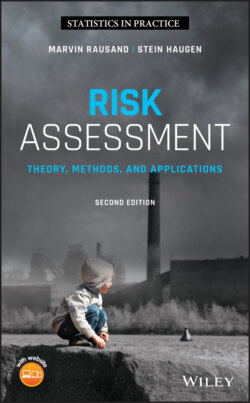Читать книгу Risk Assessment - Marvin Rausand - Страница 150
3.2.3.1 Step 3.1: Identify and List Generic Hazards and Events
ОглавлениеMethods that may be used to perform this step are presented in Chapter 10. The aim of this step is to answer the question “What can go wrong?” Based on the terminology discussion in Chapter 2, we see that this question may be answered in different ways. We may identify:
Sources of possible harm (i.e. hazards).
Starting points for accident scenarios (i.e. initiating events).
Events that are the “center” of the bow‐tie (i.e. hazardous events).
Events and conditions that trigger accidents (i.e. enabling events and conditions).
At an initial stage of a practical risk analysis, we often identify several or all of these when we try to answer the question. We may identify both flammable materials, gas leaks, ignition, fire, and explosion as separate hazards/events to consider, but when we inspect these more closely, we can see that they can form different events in a sequence, that is, an accident scenario.
The important point in this process is to identify as many events and conditions as possible. At this stage, we should not be too concerned about whether these are hazards, initiating events, enabling events, or enabling conditions.
Hazard and event identification may be supported by generic lists of hazards. Examples of such lists can be found in the standards related to machinery safety (ISO 12100 2010) and for major accident hazard management during design of offshore installations (ISO 17776 2016). When looking at these lists, we often find that the lists are also a mix of hazards, initiating events, and enabling events and conditions in the way that it is defined in this book. This may be confusing, but this should not stop us from using these lists for brainstorming purposes because the structuring of the information can be done afterwards.
